Tibetan New Year Losar Celebration
The Tibetan New Year, known as Losar, stands as the pinnacle of Tibetan cultural celebrations, marking the commencement of a new year with an outpouring of joy, tradition, and communal spirit. Celebrated with grandeur and fervour across the Tibetan plateau and in Tibetan communities worldwide, Losar embodies the rich tapestry of Tibetan culture, blending ancient rituals with contemporary festivities.
 2.jpg)
-
Origins and Significance: Losar traces its origins back to an ancient winter incense-burning custom of the pre-Buddhist Bon period in Tibet. Over centuries, it has evolved, integrating Buddhist traditions and becoming a significant marker of the lunar new year. Losar is not merely a celebration of the new year; it represents a profound cultural expression of gratitude, renewal, and hope. It's a time for families to come together, for communities to connect, and for individuals to reflect on the past and set intentions for the future.
-
Celebrations and Customs: Losar festivities unfold over several days, often beginning with preparations that symbolise the cleansing of misfortunes and bad luck from the previous year. Homes are meticulously cleaned, and special decorations are put up, including colourful prayer flags that flutter in the wind, carrying prayers and good wishes to the heavens. The eve of Losar is marked by the ritual known as Gutor, involving the preparation of a special soup called guthuk, made from nine different ingredients. This soup contains dumplings that hide symbolic items, predicting the fortunes of those who find them. The night progresses with rituals aimed at warding off evil spirits and negative energies. The first day of Losar is dedicated to family. It starts with the exchange of greetings and well-wishes, followed by visits to local monasteries to offer prayers and donations. People dress in their finest traditional attire, adding to the vibrancy of the celebrations. The air is filled with the aroma of khapsé, a fried pastry, and homes are visited by friends and relatives, with whom delicacies and stories are shared. Subsequent days involve community celebrations, including traditional music, dance, and the hoisting of prayer flags. Monasteries become focal points of activity, with monks performing masked dances (cham) and rituals to invite blessings for the new year.
-
Losar and Tibetan Identity: Losar is a potent symbol of Tibetan identity and resilience, serving as a living bridge between the past and present. In the face of modern challenges and geopolitical issues, Losar remains a vibrant testament to the enduring spirit and cultural richness of the Tibetan people. It's a time when the Tibetan community, regardless of geographical divides, unites in celebration, remembrance, and hope.
For travellers and enthusiasts looking to immerse themselves in the depths of Tibetan culture, Losar offers an unparalleled opportunity. Relax Getaways is proud to introduce guests to the heart of this celebration, ensuring an experience filled with warmth, colour, and the timeless spirit of Tibet. Join us to welcome the Tibetan New Year, and let the joyous energy of Losar inspire a journey of renewal and discovery.
Monlam Prayer Festival
The Monlam Prayer Festival, also known as the Great Prayer Festival, is one of the most significant and spiritually profound celebrations in Tibetan Buddhism. Held annually in the first lunar month of the Tibetan calendar, it falls between January and March, closely following the Tibetan New Year, Losar. This festival has deep historical roots, dating back to its inception by Tsongkhapa, the founder of the Gelug school of Tibetan Buddhism, in 1409. Monlam, meaning "wish-path" - the path of aspiration towards enlightenment, was established to pray for the long life of all the holy gurus of all traditions, for the survival and spreading of the Buddha's teachings in the minds of all sentient beings, and for world peace.
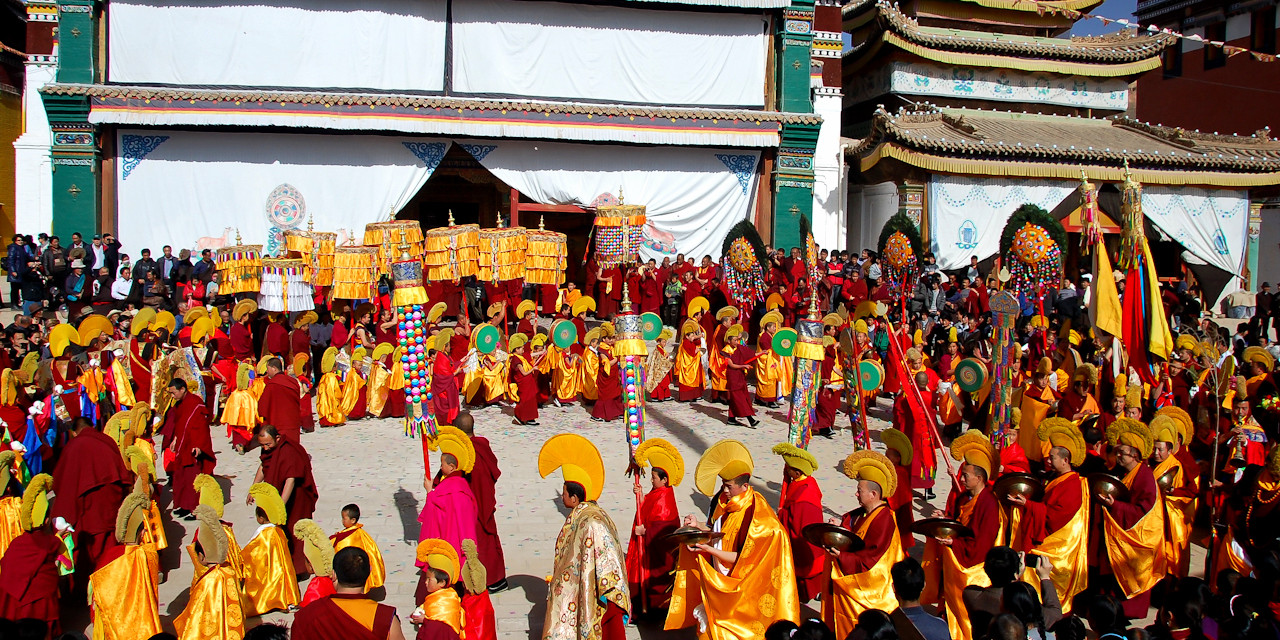
-
Spiritual Significance and Practices: The Monlam Prayer Festival primarily focuses on prayers and rituals to accumulate merit and virtue, believed to influence the well-being of Tibet and its people profoundly. It showcases the rich tapestry of Tibetan religious practices, including elaborate rituals, intricate mandala offerings, butter lamp illuminations, and the chanting of prayers. Monks from the three major monasteries of Tibet—Ganden, Sera, and Drepung—along with many others from across the region, gather for this spiritual congregation, creating a mesmerizing spectacle of devotion and harmony.
-
Activities and Attractions: One of the most visually striking features of the Monlam Prayer Festival is the display of gigantic thangkas, religious paintings, at the monasteries, attracting devotees and tourists alike. The festival is also known for its Cham dances, a form of masked and costumed dance associated with Tibetan Buddhism, performed by monks. These dances are not just artistic performances but deeply symbolic rituals meant to drive away evil spirits and bring blessings upon the viewers. Another highlight is the making and display of elaborate butter sculptures, a traditional Tibetan art form. These sculptures, made of colored butter, depict various Buddhist deities, animals, and floral motifs. They are exhibited in the monasteries and public squares, creating a vibrant and sacred atmosphere that captivates both the faithful and visitors.
-
Cultural and Social Impact: Beyond its religious significance, the Monlam Prayer Festival plays a crucial role in strengthening the social fabric of Tibetan communities. It is a time for reunion, where families and friends come together, sharing in the spirit of prayer and festivity. The festival also serves as a living museum of Tibetan culture, showcasing traditional arts, crafts, and culinary traditions, thus fostering a sense of identity and continuity among Tibetans.
-
Monlam Today: In recent years, the Monlam Prayer Festival has seen a revival and increased popularity, not just in Tibet but also in Tibetan communities across the globe. This resurgence is a testament to the enduring strength of Tibetan spirituality and its capacity to adapt and thrive in changing times. For travelers seeking an immersive cultural and spiritual experience, the Monlam Prayer Festival offers an unparalleled glimpse into the heart of Tibetan Buddhism.
At Relax Getaways, we recognize the profound impact and beauty of the Monlam Prayer Festival. Our tours are designed to provide guests with a respectful and enriching experience of this sacred event, guided by our deep commitment to cultural sensitivity and sustainable tourism. Join us to witness the power of prayer and community at one of the most important spiritual gatherings in Tibet.
Saga Dawa Festival
The Saga Dawa Festival is one of the most sacred and revered events in the Tibetan Buddhist calendar, celebrated with immense devotion and grandeur across Tibet and in Tibetan communities worldwide. This festival, held on the full moon day of the fourth lunar month (usually in May or June), marks the anniversary of three significant events in the life of Buddha Sakyamuni: his birth, enlightenment, and entry into Parinirvana (death). The name 'Saga Dawa' translates to 'Fourth Month' in Tibetan, and the festival is often referred to as the "Month of Merit" because it is believed that good deeds and spiritual practices performed during this time are multiplied in their spiritual benefits.
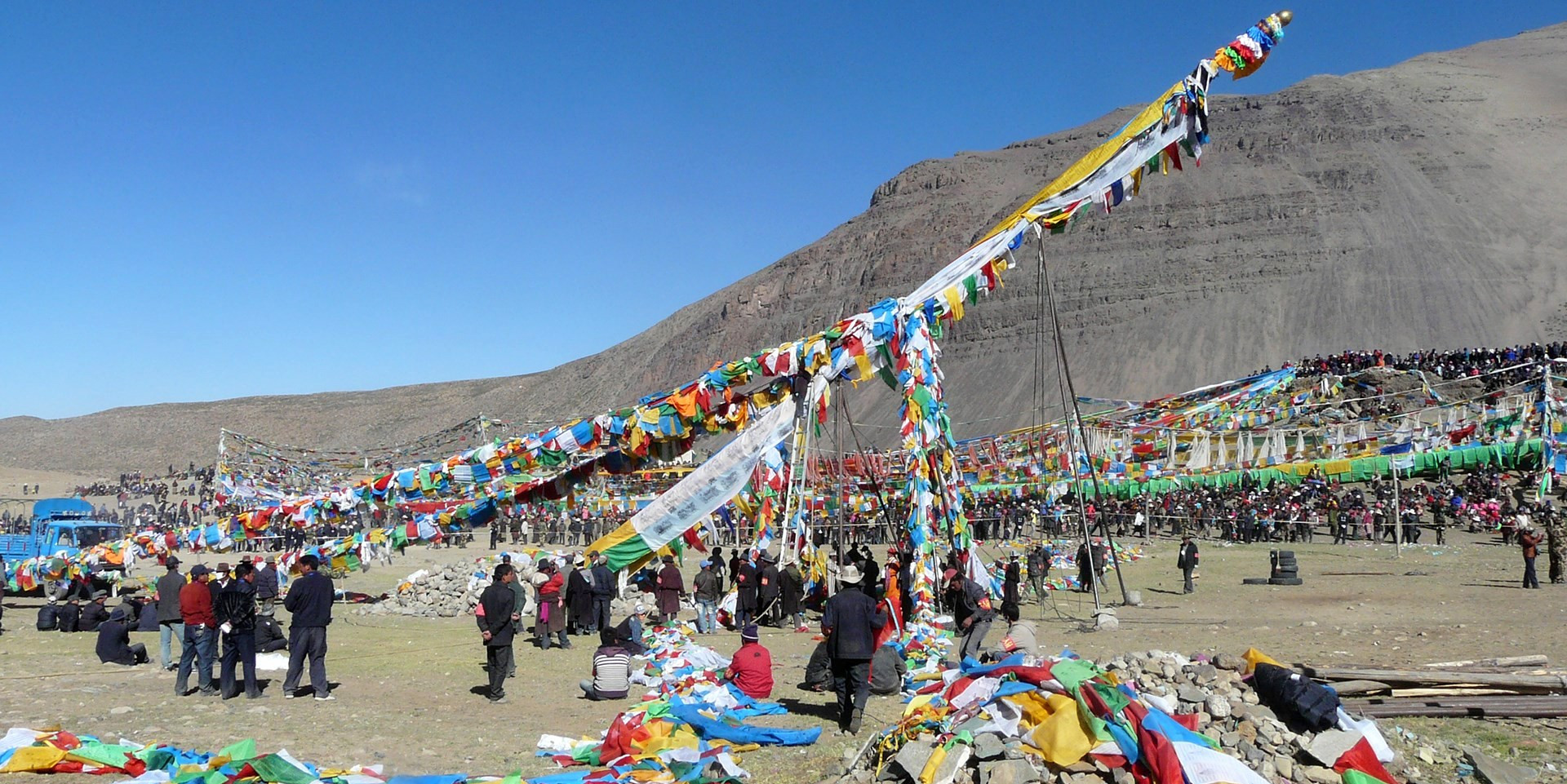
-
Significance and Celebrations: The Saga Dawa Festival is a profound expression of the core Buddhist values of compassion, peace, and enlightenment. During this month, Tibetans engage in various meritorious activities, including prostrations, circumambulations, prayer flag hangings, almsgiving, and the liberation of animals to avoid killing. The festival reaches its peak on the full moon day, when pilgrims and devotees flock to sacred sites like Mt. Kailash, Lhasa, and Tarboche Flagpole to perform kora (circumambulation) and attend ceremonial activities.
-
Tarboche Flagpole Ceremony: A key highlight of Saga Dawa is the Tarboche Flagpole Ceremony, a unique and visually striking event held at the base of Mt. Kailash. Each year, a giant prayer flagpole is ceremoniously taken down, its old prayer flags are removed, and new ones are attached before it is re-erected. This ritual symbolizes the renewal of the people's hopes, prayers, and the world's blessings. The process, accompanied by prayers and the chanting of mantras, is a powerful collective expression of faith and spirituality.
-
Spiritual Practices and Community Engagement: The festival is also a time for personal reflection and spiritual practice. Followers of Buddhism take this opportunity to reaffirm their commitment to the path of enlightenment by engaging in extended meditation, reciting sutras, and making offerings to monks, nuns, and spiritual teachers. These practices are believed to accumulate merit, which contributes to the well-being of all sentient beings and the attainment of enlightenment.
-
Cultural and Social Impact: Saga Dawa is not only a spiritual observance but also a significant cultural event that strengthens community bonds and preserves Tibetan heritage. It fosters a sense of unity and shared purpose among Tibetans, reinforcing their cultural identity and traditions. The festival's inclusive nature invites people of all ages and backgrounds to participate in its celebrations, making it a vibrant and dynamic expression of Tibetan Buddhism's living tradition.
At Relax Getaways, we understand the profound spiritual and cultural significance of the Saga Dawa Festival. Our carefully crafted tours are designed to offer an immersive experience of this sacred time, allowing travellers to witness the beauty of Tibetan spirituality and participate in the festival's traditions respectfully. Join us for an unforgettable journey into the heart of Tibetan Buddhism, where the values of compassion, enlightenment, and universal peace are celebrated with fervor and devotion.
Shoton Yoghurt Festival
The Shoton Yoghurt Festival, one of Tibet's most vibrant and celebrated cultural events, showcases the unique blend of religious devotion and communal joy that characterises Tibetan culture. Originally starting as a religious ceremony, the festival has evolved into a grand occasion that marks the end of the monks' Yarney retreat, the summer period of intensive meditation and prayer. Shoton, meaning 'Yogurt Banquet,' is celebrated with fervor in Lhasa and other parts of Tibet, typically commencing in late August and running into early September.
.jpg)
-
Historical and Cultural Significance: The origins of the Shoton Festival trace back to the 16th century when laypeople would offer yogurt to monks at the end of their meditation retreat. Over time, it transformed into a broader celebration incorporating more elements of Tibetan culture, most notably Tibetan opera (Lhamo) performances and the display of giant Thangkas.
-
The Celebrations of Shoton: The festival kicks off at the Potala Palace in Lhasa with the dramatic unveiling of a giant Thangka of the Buddha, attracting thousands of pilgrims and spectators in the early morning hours. This sacred display is not just a religious act but a vibrant cultural spectacle, symbolizing blessings and the dissemination of Buddhist teachings. Following the Thangka unveiling, the Norbulingka, the Dalai Lama's summer palace, becomes the festival's epicenter. Here, the air fills with music, as troupes from across Tibet perform traditional Tibetan opera. These performances, rich in history and legend, are a feast for the senses, featuring elaborate costumes, captivating storytelling, and heartfelt music.
-
Community and Cuisine: A distinctive aspect of the Shoton Festival is its emphasis on community gathering and celebration. Families and friends picnic in the lush gardens of Norbulingka, enjoying the serene beauty of the surroundings. The festival's namesake, yogurt, is consumed in abundance, along with other traditional Tibetan dishes, creating a delightful culinary experience.
-
Modern-Day Celebrations: In contemporary times, the Shoton Festival has expanded to include horse racing, yak races, and other sporting events, reflecting the dynamism of Tibetan culture and the adaptability of its traditions. The festival not only serves as a religious observance but also as a vital occasion for promoting Tibetan arts and crafts, providing a platform for local artisans to showcase their work.
At Relax Getaways, we are committed to offering an authentic and respectful experience of the Shoton Yogurt Festival. Our tours are designed to immerse travelers in the heart of this vibrant celebration, ensuring they witness the profound spiritual rituals and the exuberant cultural expressions that define the Shoton Festival. Join us to explore the rich tapestry of Tibetan culture, from sacred Thangka unveilings to the enchanting performances of Tibetan opera, all set against the backdrop of Tibet's stunning landscapes.
Tashilhunpo Thangka Festival
The Tashilhunpo Thangka Festival, also known as the "Tashilhunpo Monastery Festival," is a spectacular event that highlights the rich religious traditions and artistic heritage of Tibet. Held annually in the Tibetan town of Shigatse, home to the Tashilhunpo Monastery, the festival is celebrated in the fifth month of the Tibetan lunar calendar, usually falling in July. This festival is particularly significant because Tashilhunpo Monastery is one of the largest and most important monasteries in Tibet, founded in 1447 by the First Dalai Lama.
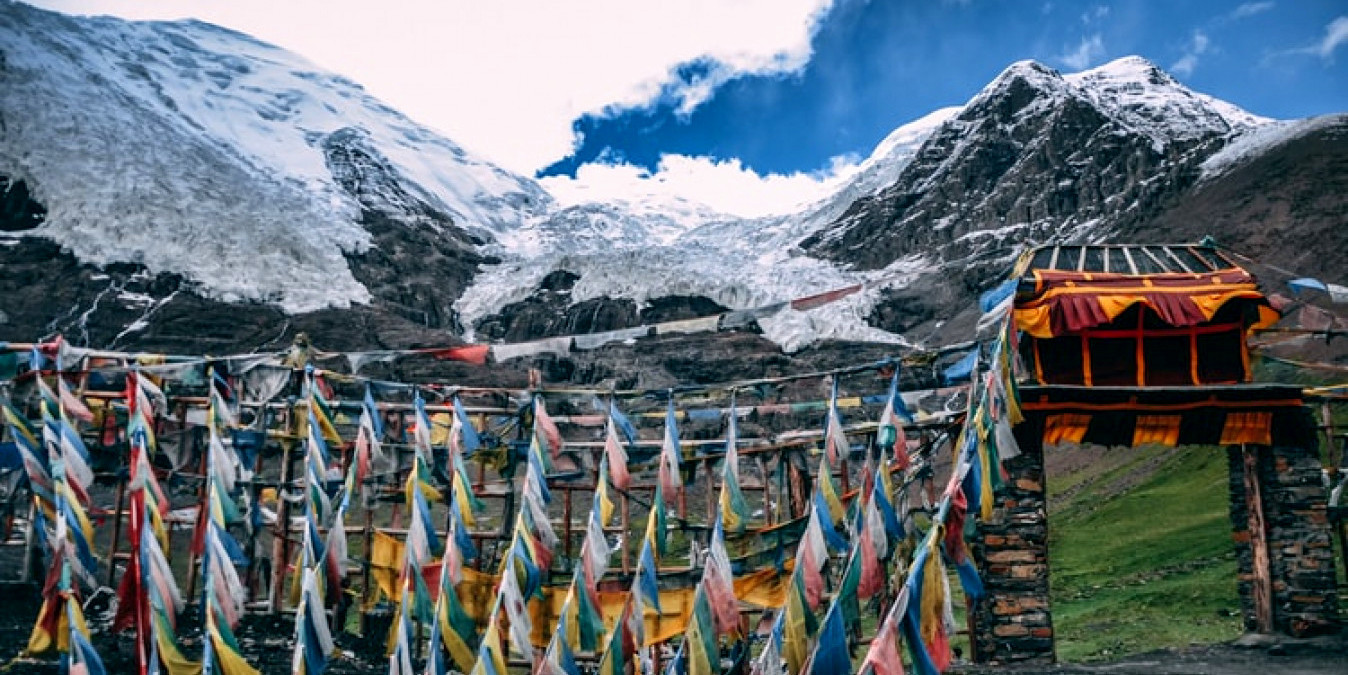
-
Significance of the Festival: The Tashilhunpo Thangka Festival is famed for its grand display of giant thangkas (Tibetan Buddhist paintings on fabric) of the Buddha, which are unrolled down the side of a hill behind the monastery. These gigantic thangkas, some of the largest in the world, are considered sacred and are believed to bestow blessings upon the viewers. The event draws thousands of pilgrims and visitors, both from within Tibet and around the globe, creating a profound sense of community and shared spirituality.
-
Celebrations and Customs: The festival's central attraction is the early morning unveiling of the thangka, a moment filled with anticipation and reverence. Monks and laypeople alike gather in the darkness, waiting for the first light of dawn to witness this rare and auspicious event. The display lasts for only a few hours, during which devotees offer prayers, light butter lamps, and receive blessings. Following the thangka display, the monastery becomes a hub of festivity and spiritual activities. Monks don elaborate ceremonial robes and perform ritual dances known as Cham, which depict historical and moral narratives from Tibetan Buddhism. These dances are not only a form of religious expression but also an art form that has been passed down through generations.
-
Community Engagement and Cultural Exchange: The Tashilhunpo Thangka Festival is also a time for social gathering and cultural exchange. Pilgrims and tourists have the opportunity to engage with the local community, sample Tibetan cuisine, and explore the market stalls that pop up around the monastery, selling everything from handicrafts to local delicacies. This interaction fosters a deeper understanding and appreciation of Tibetan culture and traditions.
Relax Getaways invites travelers to experience the spiritual majesty and cultural richness of the Tashilhunpo Thangka Festival. Our tours are carefully designed to ensure guests enjoy a respectful and enriching visit, complete with guided tours of the Tashilhunpo Monastery, insights into the significance of the thangka paintings, and opportunities to witness the Cham dances and partake in the festival's vibrant atmosphere. Join us for an unforgettable journey into the heart of Tibetan Buddhism and culture, where ancient traditions come alive in the breathtaking setting of Shigatse.
Tibetan Horse Racing and Archery Customs
The Tibetan Plateau, with its vast expanses and rugged terrain, has given rise to a culture deeply intertwined with the equestrian lifestyle. Among the many vibrant traditions of Tibet, horse racing and archery stand out for their historical significance, cultural value, and community spirit. These customs are not only a testament to the skill and bravery of the Tibetan people but also serve as a living celebration of their nomadic heritage.
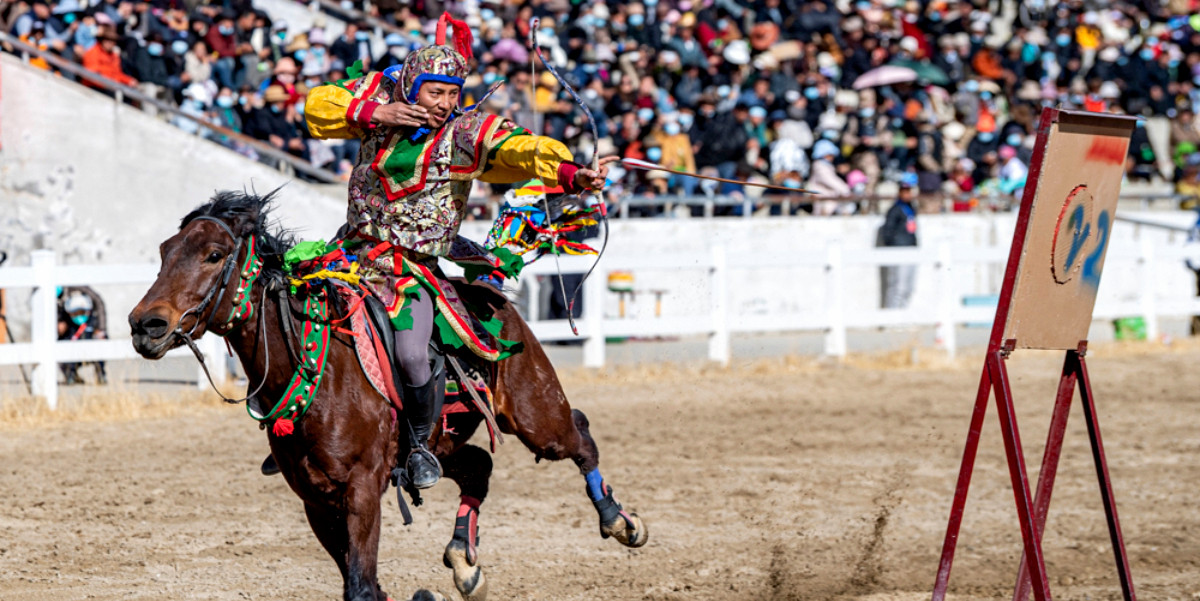
-
Tibetan Horse Racing: Horse racing in Tibet goes beyond mere sport, embodying elements of festival, social gathering, and a display of horsemanship that has been honed over centuries. The most notable events are held during the summer months, with the Nagqu Horse Racing Festival and the Litang Horse Racing Festival being among the largest and most famous. These festivals draw participants and spectators from across the region, turning the grasslands into a vibrant spectacle of color, music, and competition. The races themselves are thrilling displays of speed and agility, with riders showcasing their remarkable skills in controlling their horses at full gallop. Beyond the races, these festivals feature traditional Tibetan music and dance, elaborate costumes, and a plethora of local foods, making them a comprehensive cultural experience.
-
Tibetan Archery: Archery, another integral part of Tibetan culture, is celebrated through various festivals and competitions throughout the year. Unlike horse racing, which is more prevalent in the open grasslands, archery is practiced across Tibet, including both rural and urban areas. Tibetan archery customs are deeply rooted in history, with the bow considered not only a weapon of war but also an instrument of sport and recreation. Archery festivals are communal events that include more than just the archery competition. They are occasions for families to come together, often dressed in traditional attire, to enjoy picnics, music, and dance. The competitions are friendly yet fierce, with archers demonstrating their precision and skill, aiming at targets that are sometimes over a hundred meters away.
-
Cultural Significance: Both horse racing and archery festivals serve as important social gatherings that reinforce community bonds and provide an opportunity for Tibetans to celebrate their cultural identity. These events are a fusion of sport, culture, and religion, with ceremonies and prayers often preceding the competitions, invoking blessings for safety and success. In a world where modernization and globalization threaten to erode traditional ways of life, these customs stand as a resilient testament to the endurance of Tibetan culture. They offer a glimpse into the rich tapestry of Tibet's past and present, where the spirit of the nomadic lifestyle continues to thrive.
Relax Getaways is proud to offer tours that include visits to these captivating events, allowing travelers to immerse themselves in the unique cultural heritage of Tibet. Our itineraries are designed to provide a comprehensive experience of Tibetan horse racing and archery customs, ensuring our guests not only witness the exhilarating competitions but also engage with the local communities, understand the cultural context, and partake in the festivities. Join us on a journey to the heart of Tibet, where ancient traditions come alive in a celebration of skill, courage, and community.
Tibetan festivals vividly showcase Tibet's spiritual depth and cultural vibrancy through celebrations like Losar, Saga Dawa, and Shoton, among others. These events highlight the community's strong ties to Buddhism and nature. Relax Getaways invites travellers to experience these meaningful traditions, offering a deep dive into Tibet's rich heritage and universal values of peace and compassion. Join us for an unforgettable journey into the heart of Tibetan culture, where each festival tells a story of resilience, joy, and spiritual devotion.
FAQs for Tibetan Festivals: An Introduction to Their Vibrant Cultural
Q: What are the major Tibetan festivals?
A: The major Tibetan festivals include Losar (Tibetan New Year), Monlam Prayer Festival, Saga Dawa Festival, Shoton (Yogurt Festival), Tashilhunpo Thangka Festival, horse racing and archery events, and the Bathing Festival.
Q: When is the Tibetan New Year celebrated?
A: Losar, the Tibetan New Year, is celebrated in late January or February, depending on the lunar calendar.
Q: What is the significance of the Saga Dawa Festival?
A: Saga Dawa commemorates the birth, enlightenment, and death of Buddha Sakyamuni. It's considered the holiest month in Tibetan Buddhism, with activities focused on accruing merit through good deeds.
Q: Can tourists participate in Tibetan festivals?
A: Yes, tourists are welcome to observe and, in some cases, participate in Tibetan festivals. However, it's important to approach these cultural events with respect and mindfulness of local customs.
Q: What happens during the Shoton Festival?
A: The Shoton Festival begins with the unveiling of a giant thangka at Drepung Monastery and includes traditional Tibetan opera performances, picnics, and social gatherings, primarily at Norbulingka.
Q: How is the Tashilhunpo Thangka Festival unique?
A: Held at Tashilhunpo Monastery, this festival features the display of giant thangkas, attracting thousands for worship and pilgrimage, making it a visually stunning and spiritually significant event.
Q: What are the customs of the Bathing Festival?
A: During the Bathing Festival, Tibetans believe the water in rivers and lakes becomes most pure and has healing properties. People bathe in these waters for physical and spiritual purification.
Q: Why are horse racing and archery important in Tibetan culture?
A: Horse racing and archery are traditional Tibetan sports that reflect the nomadic heritage and martial skills of the Tibetan people. These events are celebrated with festivals that include cultural performances and community gatherings.
Q: How should visitors behave at Tibetan festivals?
A: Visitors should dress modestly, follow local guidelines for photography, and observe rituals without intruding. Showing respect for local traditions and religious practices is paramount.
Q: How can I experience Tibetan festivals?
A: Travel companies like Relax Getaways offer tours that coincide with major Tibetan festivals, providing an immersive cultural experience while ensuring respectful participation in these events.
For the Nepal tour, please click here.
If you are looking for different kinds of Nepal Tours or Trekking Packages, feel free to contact us.
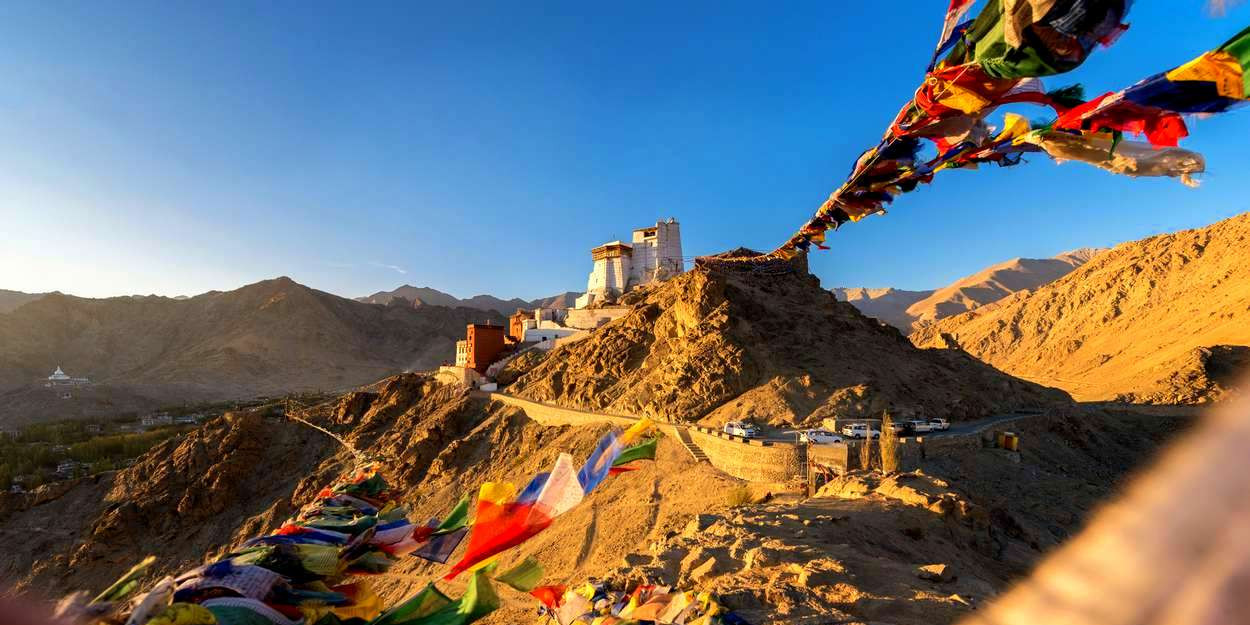

 2.jpg)


.jpg)


